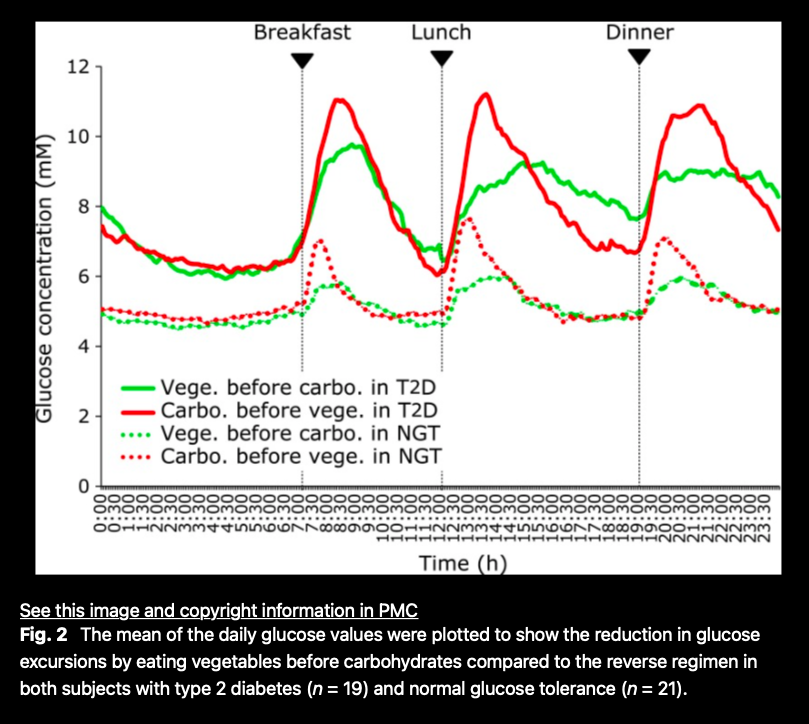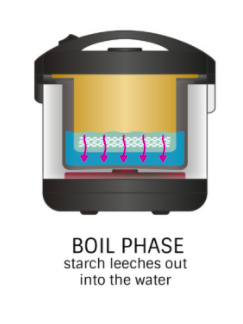Among the 3 diseases in our 3 “high” series, both Dr Wu and I would argue that Type 2 diabetes is the most complicated disease but probably the most preventable one. And it’s reversible if you catch it at an early stage! Dr Wu said, “if we eat healthily, exercise regularly, and keep our BMI (body mass index) within normal range, we can delay the onset and slow down progression of Type 2 diabetes!” In this blog, my cousin, Dr Wu , and I will discuss what we can do to prevent Type 2 diabetes.
Understanding pre-diabetes
Definitions by blood glucose:
- HbA1C (A1C) between 42 mmol/mol (5.9%) and 48 mmol/mol (6.5%)
- Fasting blood sugar of between 5.5 mol/l and 7.0 mol/l
Risk Factors of pre-diabetes:
- Genetics / Family history
- Overweight
- Unhealthy diet
- Low levels of physical activity
- Increasing age
- Ethnicity
- History of gestational diabetes
Good news is that most are reversible and preventable.
“Prediabetes is really common—more than 88 million US adults have it, though more than 84% of them don’t know they do. The good news is that prediabetes can be reversed.” ………CDC, Oct 2020.
1. Your weight loss goal
Dr Wu had mentioned the importance of losing weight and belly fat. The American Diabetes Association’s (ADA’s) Standards of Medical Care in Diabetes (Jan 2020) recommends: “Diet, physical activity, and behavioral therapy designed to achieve and maintain ≥5% weight loss is recommended for patients with type 2 diabetes who have overweight or obesity and are ready to achieve weight loss. Greater benefits in control of diabetes and CV factors may be gained from even greater weight loss. “
So, target 5% weight loss initially by lifestyle changes, and 10% as your goal. The safe weight loss is at one pound a week.
2. Dietitians are your best friends.
Once you find out you have high blood sugar or are diagnosed with diabetes, I strongly recommend you to consult with a registered dietitian to guide you and tailor made you a personalized meal plan instead of avoiding foods by yourself. After all, there’s no one-size-fits all diet. You will be very happy after seeing a dietitian, I guarantee. Lots of my clients feedback how innocent they were – cutting down and avoiding a lot of foods they thought they shouldn’t eat. So please get in touch with a dietitian or me as soon as you are diagnosed to make your life much easier.
3. Go low-carb, not no-carb!
Let’s see what the experts say.
Diabetes UK just released a position statement on low-carb diet in May 2021.
"Together with the Scientific Advisory Committee on Nutrition (SACN) we have released a report which recommends lower carb diets as a short-term effective option for adults with type 2 diabetes who have obesity or overweight. This includes low carb diets providing 50 – 130g of carbs a day. These diets can help with weight loss, glucose management and reduce the risk factors associated with cardiovascular disease. So, we can recommend them for some adults with type 2 diabetes. But, there is no consistent evidence that a low carb diet is any more effective than other approaches in the long term. So it shouldn’t be seen as the diet for everyone".
".....not recommend low carb diets to people with type 1 diabetes and children with diabetes." "Evidence for low carb diets in children reports adverse effects such as poor growth, a greater risk of cardiovascular disease and psychological problems."
"People should be encouraged to eat more vegetables, fruits, wholegrains, pulses, seafood, nuts, and to eat less red meat and processed meat, sugar sweetened drinks, sugar sweetened foods, and refined grains such as white bread. "
4. Let “MyPlate” be the guide!
Remember MyPlate from my previous blog – high cholesterol? The whole idea is to have your carb in the right proportion – 1/4 of your plate.

Carbohydrates: Rice, pasta, potato and wholegrain bread.
And don’t forget your protein at each meal as it plays a key role in helping to control appetite , helping you feel fuller for longer!
5. Fill half of your plate with non starchy vegetables (low-carb veggies)
Have a look at your veggies. Are they mostly non-starchy vegetables like green leafy vegetables, spinach, kale, bok choy, choy sum, and broccoli, cauliflower, cabbage, sweet peppers, green beans, mushrooms, cucumber, celery, tomatoes….?
Examples of starchy vegetables are potatoes, corn, peas, winter squash, butternut.
Pulses like beans, chickpeas, lentils, dahl would be counted towards protein.
6. Make half your grains whole grains!
Whole grains: Oats, red rice, black rice, wild rice, brown rice, whole wheat, wheat berries like farro and spelt, quinoa, millet, cornmeal.
American Diabetes Association also recommends:
- Choose whole foods, wholegrain varieties such as wholegrain bread, wholegrain pasta, brown rice, wild rice.
- Emphasize non-starchy vegetables.
- Minimize added sugars and refined grains.
- Choose whole foods over highly processed foods to the extent possible.
More details on What is a healthy, balanced diet for diabetes?
7. Not all carbs are equal.

So which carb performs better? Pasta or rice? From the chart above, I’m sure you can tell that pastas perform better than white rice.
8. Not all rice are equal.
How about white rice versus basmati rice? White rice (and white bread) are known to have high glycemic index (GI). Basmati rice is low to medium GI food with higher in fiber, B vitamins and other nutrients. So basmati rice is better for diabetic.
Ways to include low-GI carbs in everyday meals: . Choose basmati or easy cook rice, pasta or noodles. Or, try plantain, quinoa or bulgur wheat for a change. . Eat wholemeal roti and include dhal in your meals. . Use new potatoes instead of old potatoes – try sweet potatoes for a change. . Instead of white and wholemeal bread, choose granary, pumpernickel or rye bread. . Try porridge, natural muesli or wholegrain breakfast cereals. (Source: ADA)
9. Eat your veggies first!
Holly also mentioned a review conducted by Saeko et.al: “The postprandial glucose and insulin levels decreased significantly when the patients ate vegetables before carbohydrates!” So eat your vegetables or salad first, follow by your main dish (meat, fish, soybeans) and end with carb (potatoes, pumpkin, corn).

The educational brochure about eating vegetables before carbohydrates for the patients with type 2 diabetes. A good illustration and easy to understand!
Source: J Clin Biochem Nutr. 2014 Jan; 54(1): 7–11.

10. Can cooking method differ the sugar content?

Dr Wu reminded me to mention the low-carb rice cookers. Based on the recommendations from the Department of Health, Hong Kong Medical Association and Hong Kong Dietitians Association, consumers should think twice before purchasing low-carb rice cookers (Consumer Council, 15 June 2021)
– “The Department of Health opines that low-carb rice cookers use more water when cooking low-carb rice. As a result, some nutrients such as carbohydrates and water-soluble vitamin B may dissolve in water and be lost when the residue water is poured away, thus lowering the nutrient content of low-carb rice and potentially hindering the growth of children and teenagers or lead to weight gain;
– The stability of low-carb rice is yet to be tested and confirmed. Therefore, it is not recommended for diabetics to rely on low-carb rice cookers to control their condition;
– The Hong Kong Medical Association also reminds that low-carb rice cookers achieve a carb-reducing effect by using large amount of water in order to dissolve the starch in rice into water. However, some tests have revealed only a small portion of starch (1 to 3%) is dissolved in water. Therefore, the impact on the glycemic index (GI) is low;
– The Hong Kong Dietitians Association recommended that in order to stay healthy while eating rice, the simplest and most direct way is to control the serving size of rice. To increase satiety, ingredients such as oats, mushrooms, carrots, corn and beans could be added when cooking rice.”
Do you know that freezing your bread and rice can reduce their sugar content?!
11. Know your sugar allowance a day
Per Diabetes UK, you can have up to 30 grams of free sugar a day and good news is…. fruits are not counted in there. So enjoy your 5 A day (5 fruits and vegetables a day), 2 of which are fruits. Whole fruits are the best. Should you prefer to have juice or smoothies, limit it to 150ml (5 ounces) per day!

One can Latte, 250 ml contains
9.5 gram sugar.
so that’s about 1/3 of sugar allowance a day.
The maximum recommended daily amount of sugar is 30g for adults – which works out at just seven teaspoons a day. Given that a tablespoon of ketchup contains around one teaspoon of sugar, a chocolate biscuit has up to two, and a small serving of baked beans almost three, you can see how quickly the teaspoons tot up. (Diabetes UK)
Processed foods, such as breakfast cereals, sauces and salad dressings have both “hidden sugar” and “added sugar”. Look at the ingredients lists and beware of “ose” sugars, such as sucrose, fructose, dextrose, maltose, glucose, and “syrupy” sugars such as honey, golden syrup, maple syrup, corn syrup, agave. – they are just some of the many names for added sugars.
The U.S. Food and Drug Administration (FDA) approved sugar substitutes (source: ADA)
- Saccharin (Sweet’n low)
- Neotame (Newtame)
- AcesulfameK (Sunett, Sweet One)
- Aspartame (Nutrasweet, Equal, Sugar Twin)
- Sucralose (Splenda)
- Advantame
- Stevia
- Luo han guo (monk fruit)
A word of caution—claims like "sugar-free," "reduced sugar" or "no sugar added" are not necessarily carbohydrate-free or lower in carbohydrate than the original version of the food. We recommend that you read the Nutrition Facts label to understand how many carbs and calories you are eating ..... American Diabetes Association
12. Can I still have my milk chocolate?
A new research article just published at FASEB Journal on 23 June 2021 said, yes, in the morning (within one hour after waking time)! “Our results showed that chocolate in the morning decreases fasting glucose. Chocolate may improve glucose homeostasis by slowing carbohydrate digestion and absorption. Indeed, cocoa could reduce the rate and extent of macronutrient digestion by binding to and antagonizing digestive enzymes which may help explain the previously reported inverse relation between chocolate intake and Type 2 Diabetes Mellitus (T2DM) incidence. …..The volunteers did not gain weight despite increasing caloric intake. Chocolate reduced ad libitum energy intake, consistent with the observed reduction in hunger, appetite and the desire for sweets”. Good news to chocolate lovers!
13. Weight resistance exercise
Apart from diet, don’t forget to exercise. While aerobic types of exercise like walking, jogging, running, swimming are all good for you, resistance exercise is very important in controlling your blood sugar.
Resistance training improves blood glucose control and helps the body use insulin more efficiently. It also decreases fat mass, increases muscle mass and improves strength. People with diabetes should aim for two or three resistance-training sessions per week .... American Diabetes Association



14. Join a local diabetes prevention program.
I also teach the National Diabetes Prevention Program in UK and it’s inspiring to see how many people have come out of Pre-Diabetes! It is reversible! If you are pre-diabetiic, I strongly encourage to take advantage of this free National Diabetes Prevention Program.
15. Calculate Your Risk
Know your risk of Type 2 diabetes
16. Resources:
- American Diabetes Association
- Diabetes UK
- More details on What is a healthy, balanced diet for diabetes?
- 香港糖尿聯會
- Glycemic index
17. A final note – Take it seriously!
“The latest edition (2019) of the IDF Diabetes Atlas shows that 463 million adults are currently living with diabetes”………. International Diabetes Federation


Very useful article, explains diet and diabetes very clearly by a doctor.
Helpful information about what to eat, by a registered dietitian.
Thank you Dr. Wu and Charmain dietitian
Thank you! Glad you found them useful.